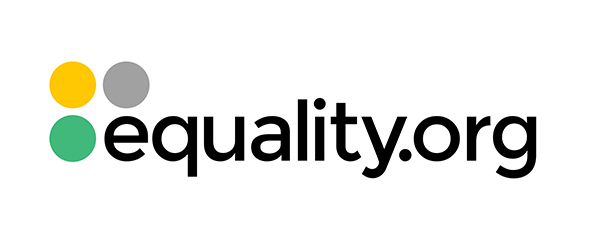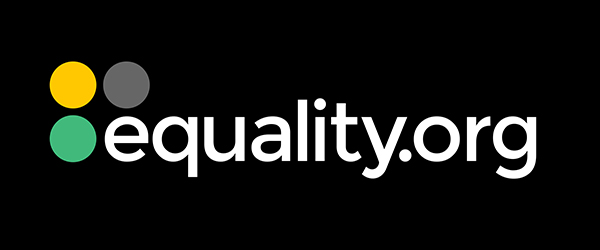Dreams of College Graduation; Realities of Income Disparities
Darren dreamed of escaping the projects of Philadelphia and the cycle of inherited poverty by becoming the first in his family to graduate college. After all, wasn’t college the gate keeper to middle class living? Despite a depressed education that grossly underprepared him, Darren was armed with tenacity and a strong desire to overcome the statistics. Although shy, Darren was a serious young black man who over time, revealed his penchant for poetry and his desire to become a successful writer. He had to work two jobs and squeeze classes in between, leaving little time for homework or camaraderie with other students. His college experience would be worlds away from those classmates that came from middle-class or affluent families. Like the plethora of low income students who yearn for a college education, Darren’s graduation trajectory, at least statistically speaking, was poor.

As a college professor teaching at both a four year and two year college, I saw this scenario over and over. I also witnessed and experienced first hand how the American Education System is not designed for low income families. The reality is if you come from a financially compromised household where no adults went to college, the road to graduation is an arduous, backbreaking journey with little support along the way. In 2017, according to the National Board of Education, the rate of graduation for upper to middle income students was sixty percent, and for the marginalized low income students graduation rates plummeted to a mere sixteen percent.
How Does This Exist in Our Society?
Why do these disparities exist in today’s modern America, which according to the Wall Street Journal is the eleventh richest country in the world? The convoluted answer can be distilled down to money, who has it, and who does not, which opens an endless discourse about racial privilege, sexism, and our sordid past with both. It is also about values and where colleges place theirs. Finding universities that recruit low income students is like finding employers with mentorship programs or on the job training. They rarely exist any longer.
In my (Italian) grandfather’s generation they did; he was able to became a mechanical/chemical engineer by working his way up from a janitorial position, being mentored on the job. In today’s world, you must have an education if you want to be an engineer, or hold any professional position. And with this truism, the path to graduation needs to be widened, rethought, more inclusive.
The Luxury of an Education
Like Darren, many of my students came from families where college was never an option. Let’s face it, you can’t think about learning if you are hungry or don’t have a roof over your head. It doesn’t take a degree in psychology to understand that if basic survival needs are not met, going to college is at the bottom of the priority list.
When these low income students arrive at college, it is often through sheer determination to succeed and the struggle is far from over once they enter their first class. I remember my absolute terror and unbridled excitement entering a college classroom for the first time. I wanted to burst into tears, pinch myself repeatedly, whisper I am here over and over.
As a professor, I could relate to my student’s struggles. The only way I went to college, was through grants, financial aid, and working fulltime. I remember the searing agony I felt when I had to give up going awayto a college in New Hampshire that I had been accepted to. After graduating from a community college, I clawed my way back to school while working and being a single mother. This changed the course of my life.

Richard Reeves
“…where college money is actually going. They say, look there’s always other support going to poorer kids, well, there actually isn’t.”
Students today have it even harder for there is less and less financial assistance for lower income students than ever before. College greed is an insidious barrier to improving graduation percentages for financially compromised students. A stagger number of colleges choose not to invest in low income students.
Financial Assistance
Children who come from upper middle class families have a seventy-seven percent admission rate to Ivy league schools those on the lower economic spectrum, have a twenty percent rate, despite their higher than average scores on standardized admissions tests. Ron Ehrenburg a Cornell economist and director of the university’s higher education research institute said, “ We are not helping the right people go to college as we should.”
Private financiers, scholarships and endowment monies are being funneled to the wealthy. Richards Reeves a senior fellow of economic studies at the Brooking Institute and author of “Dream Hoarders: How the American Upper Class Is Leaving Everyone Else in the Dust” explained that the middle and lower class are basically being hoodwinked.
“There is a very seriously warped view among many Americans, particularly more affluent Americans about where college money is actually going. They say, look there’s always other support going to poorer kids, well, there actually isn’t. But the ignorance about where the money is actually going and who benefits from it, that ignorance is really an obstacle to reform around what is in fact a reverse distribution.”
Giving students a voice helps them contextualize their education obstacles, and to redefine themselves. Like the coveted cultural diversity, financial diversity should be dragged into the conversation as it can teach valuable lessons to students from wealthier families who may be clueless about what financial hardship looks like.
A Global Effect
While teaching in Manhattan, I had students from around the globe. In open discussions, students from Fuji or Kenya, or Israel talked about their cultural perspectives. This helped other students understand world views. When the students from low income or underserved communities talk about their world, the injustices, the struggles, there are equally valuable lessons.
I have witnessed students from very different financial backgrounds bonding together helping each other. It teaches students appreciation and offers a real time experience on what challenge looks like. If low income and first generation students are given a platform and taught to be proud of how far they’ve come, this is positive feedback. It helps them stick it out, making it to graduation demands encouragement that most colleges and classrooms don’t offer or even address.
To help first-time college students transition, I instigate discussions about financial diversity in the early part of the semester as a platform to vent their fears about college. Many low income students expressed feelings of not belonging, worrying that people would judge them, as if they were a fraud without a right to be there.
In one of my English classes a soft spoken young woman named Ivy said; “My mother was a heroin addict, the only thing she ever cooked was something she put in a baggy that I had to sell on the streets. I am not her though.” Other students shared their anxiety about not having a computer, or of having to work and take care of family members while going to school. Some students talked of tragic childhoods that caused far reaching trauma and psychological scars.
It is not enough to merely give students financial aid, there needs to be a bridge, a place to fill up, support systems as they travel into the land of higher education. They need to be taught to respect themselves and to affirm their right to be educated.

Without consistent assistance, getting to graduation often proves too much of a financial hardship. The disparity in dropout rates for those students needing financial assistance compared to the upper middle class students, (16%/60%) is one of the biggest education crisis in the United States.
Transfer to dropout?
Students like Darren start off strong but often become overwhelmed, tired, frustrated and they dropout because the load is too heavy to carry the four or six years to graduation. Some first generation or marginalized students piecemeal their education, snagging it when they can here and there in between trying to survive financially. This daunting timeline of working and going to school for years on end, grows threadbare particularly when students are trying to get their prerequisite courses completed.
Many low income or first generation students are being recruited at hideously high rates by the for profit colleges. They are lured into outrageously overpriced programs that promise services they never deliver; after graduation job placement, financial aid, college counseling, free tutoring. Often students are horrified when they learn later that courses they took at places like Phoenix University, or Le Cordon Bleu College of Culinary Arts, are not transferable to a four year college.
Barmak Nassirian, the director of Federal Relations and Policy Analysis at the American Association of State Colleges and University says the issue is, “Terrible outcomes are very profitable and there is not adverse consequences visited upon corporations that generate absolutely abysmal consequences for both students and tax payers.” And when students drop out of these for profit schools, they are shouldered with college debt that does not equate to the quality of the education.
Endownments
Endowments are another financial conundrum that hinders low income students from receiving financial assistance. Endowments often come with caveats. Donors want their money allocated to specifics such as, the arts, or a particular department. This freezes funds and minimalizes monies allotted to students on an as needed basis. This money that could help financially strapped students, would also help increase the graduation rates. If you can’t afford to buy your books, or a computer to do your homework on, staying in college becomes exponentially difficult.
The disproportionate cost of college compared to income levels punishes students who do come from wealth. In France and other European countries where college is funded through taxes, students have a built in freedom to explore their potentiality, their creativity, their interests.
Here in the states, low income students often do not have the freedom to switch majors on a dime or at all. They spend less time on campus because of work or family obligations, which robs them of the full college experience such as participating in outside activities that help students navigate and practice for life outside of school. Statics have shown that when students have less involvement in a college the potential for their dropping out increases.
The importance of a higher education begins at the elementary level. If a child is continually shoved through the system, without grasping the tasks necessary for the next grade, by the time they reach high school they are underprepared for college. My student Darren was a prime example. One of the assignments I gave the class was to do give an oral presentation along with the paper they were to write. The topic was the inequalities of education.

Darren’s presentational piece was a poem by Lamont Carey. The poem’s title, I Can’t Read. It is a gut wrenching testimony about the performer’s experience as a child in the ghettos of Washington D.C.. Although the poem is fictitious it represents what happened to many friends and students that Carey knew.
The character in the poem cannot read, but he can play basketball and was good at it. Because of being an esteemed ball player he is pushed through the school system. In the end, when he breaks his leg during an intense game with the school’s number one rival, his dreams of saving his family from the projects are shattered.
Darren’s rendition was so powerful, more than half of the students were in tears (including me) by the end. The piece was important to Darren because it took him years of learning on his own how to read and write. It took one observant teacher to recognize Darren’s love of narrative and poetry and to embolden him with confidence. Carey was a hero to Darren because although he was a convicted felon at the age of sixteen, he went on to learn to write and became a respected spoken word poet, activist, published author, and a motivational speaker.
The discussion that followed the presentations on education inequality, was inspiring. The students identified solutions to the hurdles they encounter. Ideas like more available counselors on campus, more one on one tutoring options, smaller classes for more individualized learning.
Malcolm X said, “Education is our passport to the future, for tomorrow belongs to the people who prepare for it.” Under preparedness an ubiquitous culprit of why low income students have poor graduation rates, needs to be addressed.
If you have been given a shoddy education since the first grade, you are going to have to work a lot harder than the student who received a sound educational foundation. You have a lot of catching up work to do. We have to reach students before they get to high school. If all public schools were equal, college preparedness and graduation rates would take to the skies.

I am happy to report that Darren eventually made it, he donned his cap and gown and strutted with well deserved pride across the stage to receive his diploma as I cheered and wept for joy that he refused to be a statistic. It’s time for all students with a dream of graduating college to not be excluded because of money.



